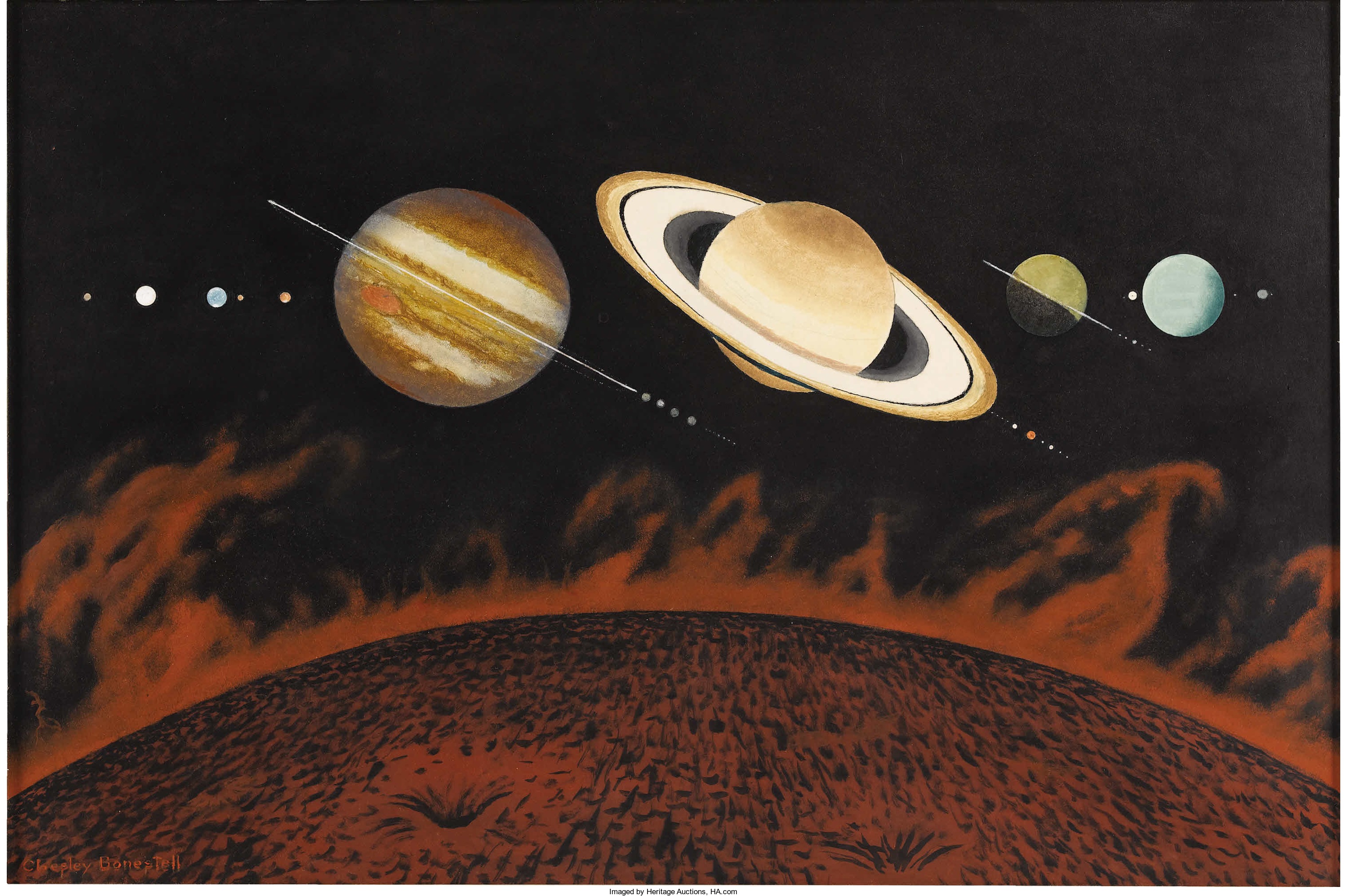
By Jim O’Neal
Four gigantic planets dominate the outer solar system. Very different from the rocky inner planets, these strange worlds are huge globes of gas and liquid, with no solid surface and hundreds of moons.
After the sun formed, its heat drove gases away from the inner solar system, leaving behind heavier compounds such as rock and metals. Astronomers call the outer planets gas giants, though they consist mostly of liquid, with solid cores.
Mighty Jupiter is the fifth planet from the sun and the largest in the solar system – so big that it is 2.5 times more massive than all the other planets combined! Its strong gravitational pull greatly affects the orbits of other planets, and its rate of spin stretches its surface clouds into spots (storms) and ripples swirling together.
The second-largest planet and sixth farthermost from the sun is Saturn, which shines like a bright yellow star. Even a small telescope will reveal its most famous feature: a magnificent ring system. Saturn’s main rings are 220,000 miles wide, yet they are only 30 feet thick. Beyond the main rings are hazy outer rings.
Uranus, the seventh planet from the sun, was unknown to ancient astronomers, even though it is visible with the naked eye in perfectly clear and dark skies. Composer William Herschel discovered it from his back garden in Bath, England, in 1781. It is similar to Neptune and is the coldest of all the planets. A faint set of rings was discovered in 1997 and all of its 27 known moons are named after characters in works by Shakespeare or the English poet Alexander Pope.
Neptune, the eighth and farthest from the sun, was discovered in 1846. Astronomers had noticed Uranus wasn’t following its expected path – there seemed to be an unseen body, perhaps an undiscovered planet, pulling on it. Two mathematicians calculated where it might be and within days, it was spotted by an observatory in Germany. The violent weather on the surface is thought to be powered by 1,300-mph winds from internal heat, since it is too far from the sun to absorb much warmth.
Our sun belongs to a giant whirlpool of stars called the Milky Way. Like all galaxies, the Milky Way is unimaginably vast. Galaxies come in all shapes and sizes, with some containing a few million stars, and others trillions. Our little home seems to be quite cozy and we need to take good care of it since there are no known options (at least yet).
 Intelligent Collector blogger JIM O’NEAL is an avid collector and history buff. He is president and CEO of Frito-Lay International [retired] and earlier served as chairman and CEO of PepsiCo Restaurants International [KFC Pizza Hut and Taco Bell].
Intelligent Collector blogger JIM O’NEAL is an avid collector and history buff. He is president and CEO of Frito-Lay International [retired] and earlier served as chairman and CEO of PepsiCo Restaurants International [KFC Pizza Hut and Taco Bell].

